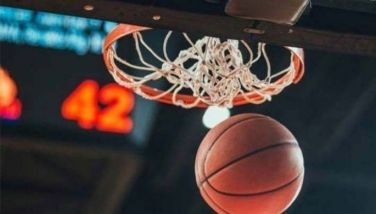Why confuse athletes?

It’s every athlete’s dream to scale the heights, one level at a time. For the Filipino national athlete, the pursuit of excellence on the international stage usually starts at the SEA Games then Asian Games and culminates at the Olympics. Aside from the World Championships, those are the three major competitions where athletes aspire to land a podium finish as incentives await the medalists by law.
But along the way, there are impediments that make the journey more challenging. A drawback is the lack of uniformity in weight divisions of certain sports. Boxing and weightlifting, for example, are two sports that cry out for a logical alignment. They also happen to be the weight-classified sports that deliver the highest probability of success for Filipino athletes at the Olympic level.
Let’s examine the situation in boxing. At the 2020 Tokyo Olympics, 13 gold medals were at stake, eight for men and five for women. The men’s divisions were flyweight (52kg), featherweight (57kg), lightweight (63kg), welterweight (69kg), middleweight (75kg), lightheavyweight (81kg), heavyweight (91kg) and superheavyweight (+91kg). Carlo Paalam brought home a silver at flyweight and Eumir Marcial, a bronze at middleweight. The women’s divisions were flyweight (51kg), featherweight (57kg), lightweight (60kg), welterweight (69kg) and middleweight (75kg). Nesthy Petecio took the silver at featherweight. At the 2023 SEA Games, there were 16 gold medals up for grabs, 11 for men and five for women. The men’s divisions were lightflyweight (48kg), flyweight (51kg), bantamweight (54kg), featherweight (57kg), lightweight (60kg), lightwelterweight (63.5kg), welterweight (67kg), lightmiddleweight (71kg), lightheavyweight (80kg), cruiserweight (86kg) and heavyweight (92kg). Bagging golds were Paalam at bantamweight, Ian Clark Bautista at featherweight and Paul Bascon at lightweight. Silver medalists were Rogen Ladon at flyweight, Norlan Petecio at welterweight and John Marvin at lightheavyweight. The women’s divisions were bantamweight (54kg), featherweight (57kg), lightwelterweight (63kg), lightmiddleweight (69kg) and middleweight (75kg).
At the Hangzhou Asian Games and next year’s Paris Olympics, weight divisions were reclassified to seven for men and six for women. For men, flyweight dropped from 52kg to 51kg, lightwelterweight rose from 63kg to 63.5kg, welterweight was replaced by lightmiddleweight, middleweight was removed, lightheavyweight was reduced from 81kg to 80kg and heavyweight moved from 91kg to 92kg. The tweaks bumped up Paalam to featherweight, Marcial to lightheavyweight and Marvin to heavyweight. Weights are critical because fighters are weighed in on the morning of each fight. Depending on the entries, a fighter could engage in four or five bouts up to the final. It’s unlike in the pros where fighters are scaled the day before a fight and could bloat overnight to enter the ring much heavier when the bell rings. For women, lightflyweight (50kg) and bantamweight (54kg) were added, removing flyweight. Welterweight was trimmed from 69kg to 66kg. Irish Magno fought at flyweight at the Tokyo Olympics and will campaign as bantamweight in Hangzhou. The juggling of weights has led to some confusion as nutritionists recalibrate diets of athletes to adapt to the changes. In Tuesday’s column, we look into weightlifting.
- Latest
- Trending
































